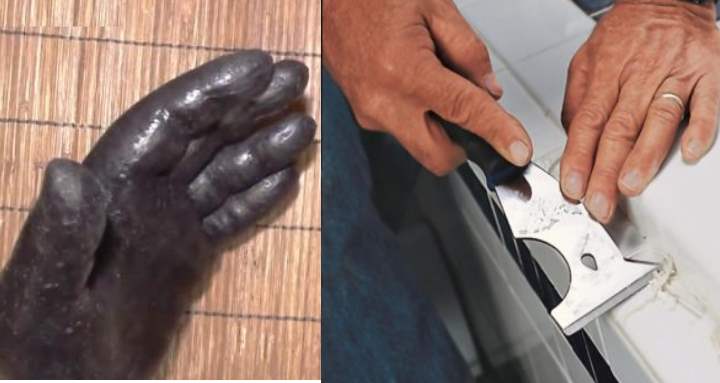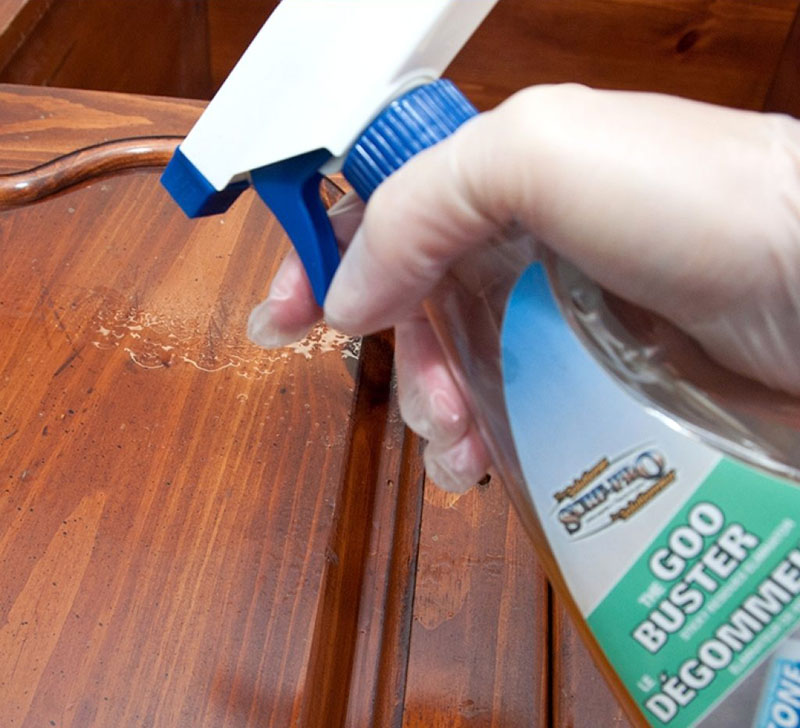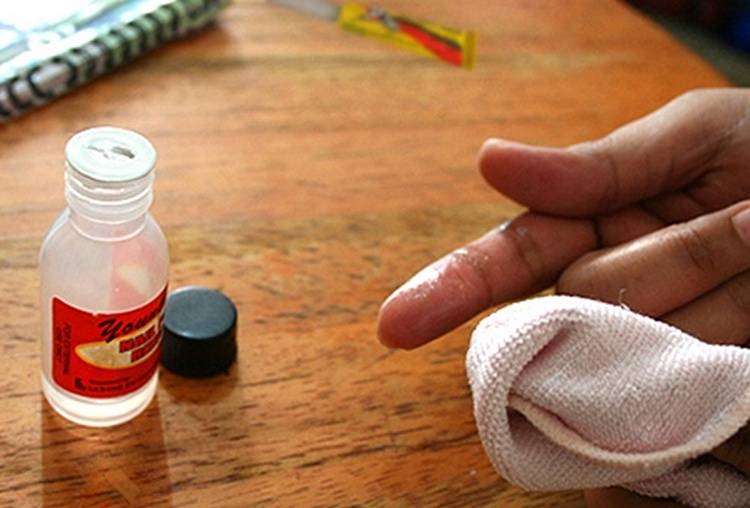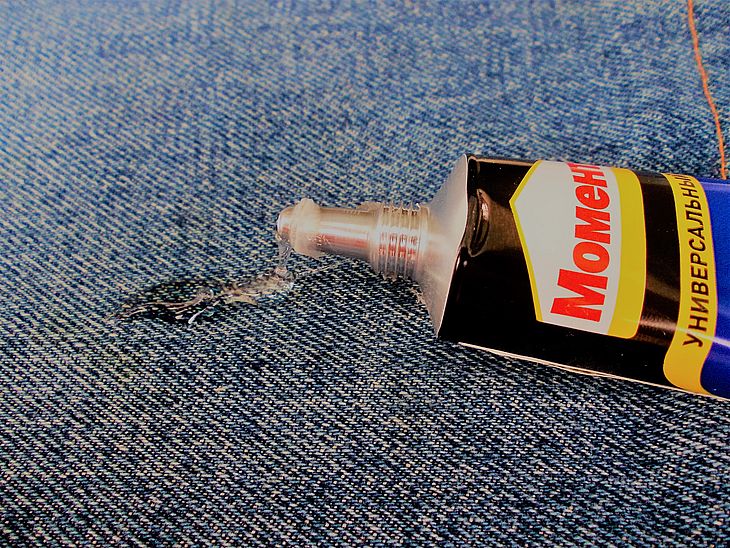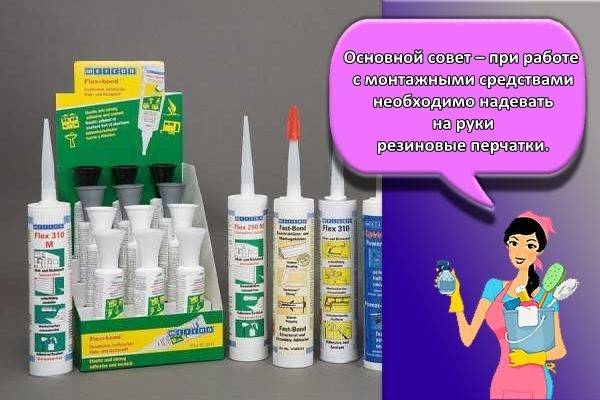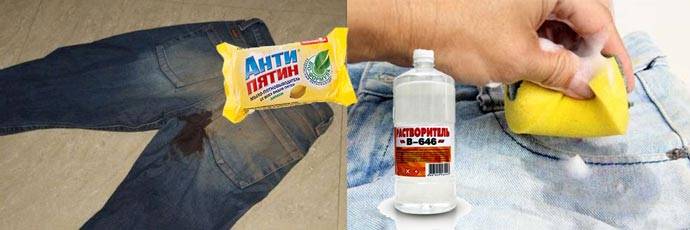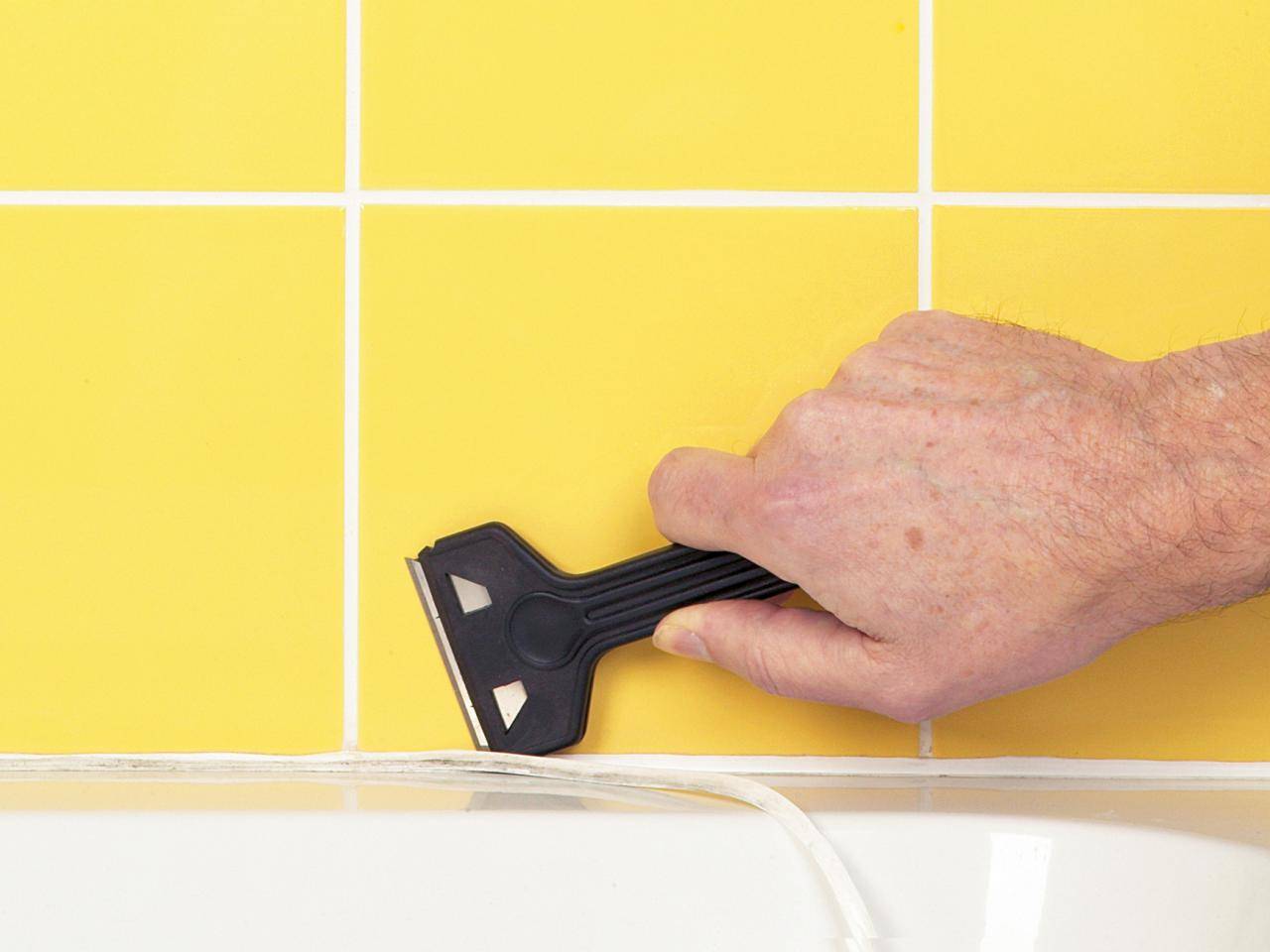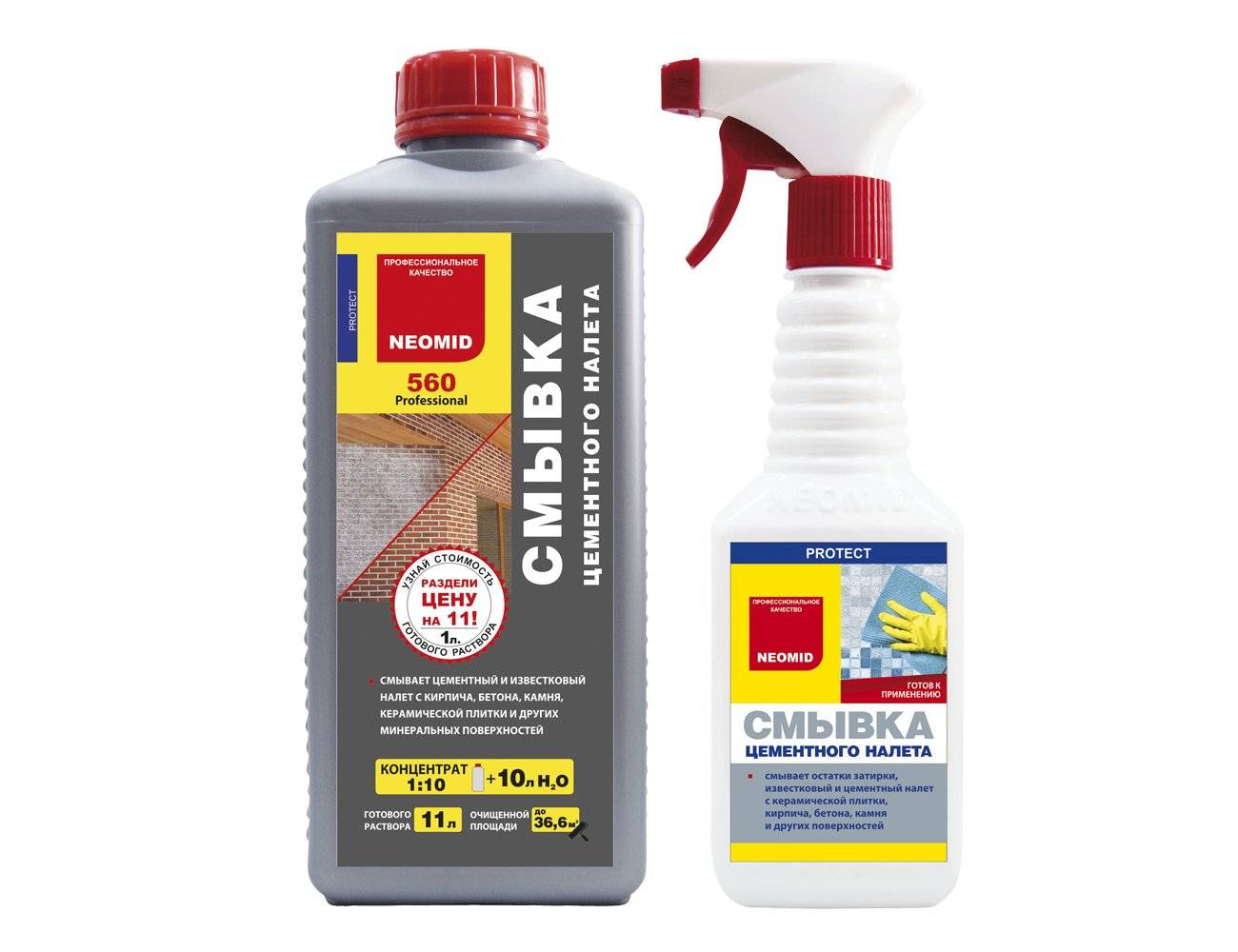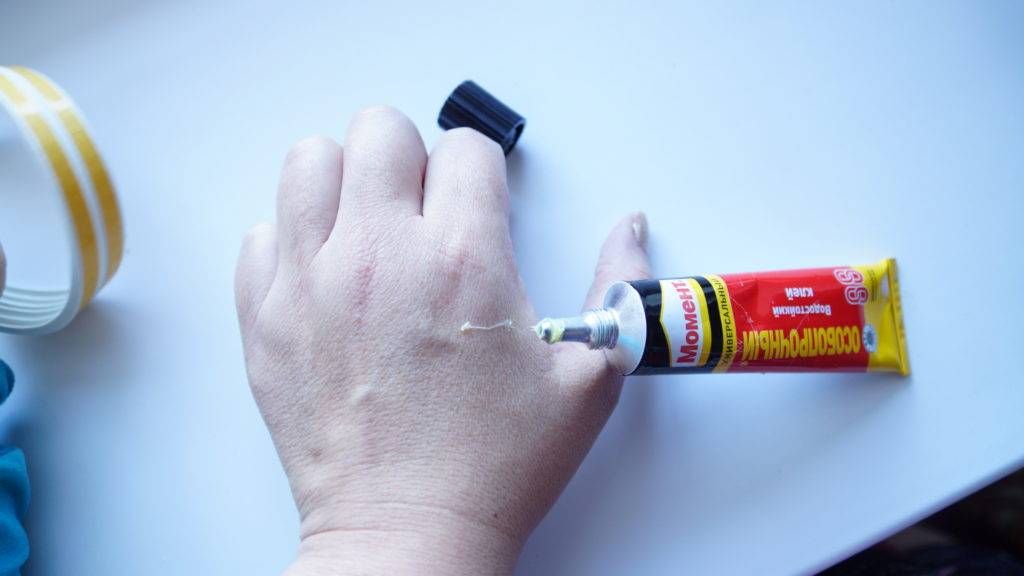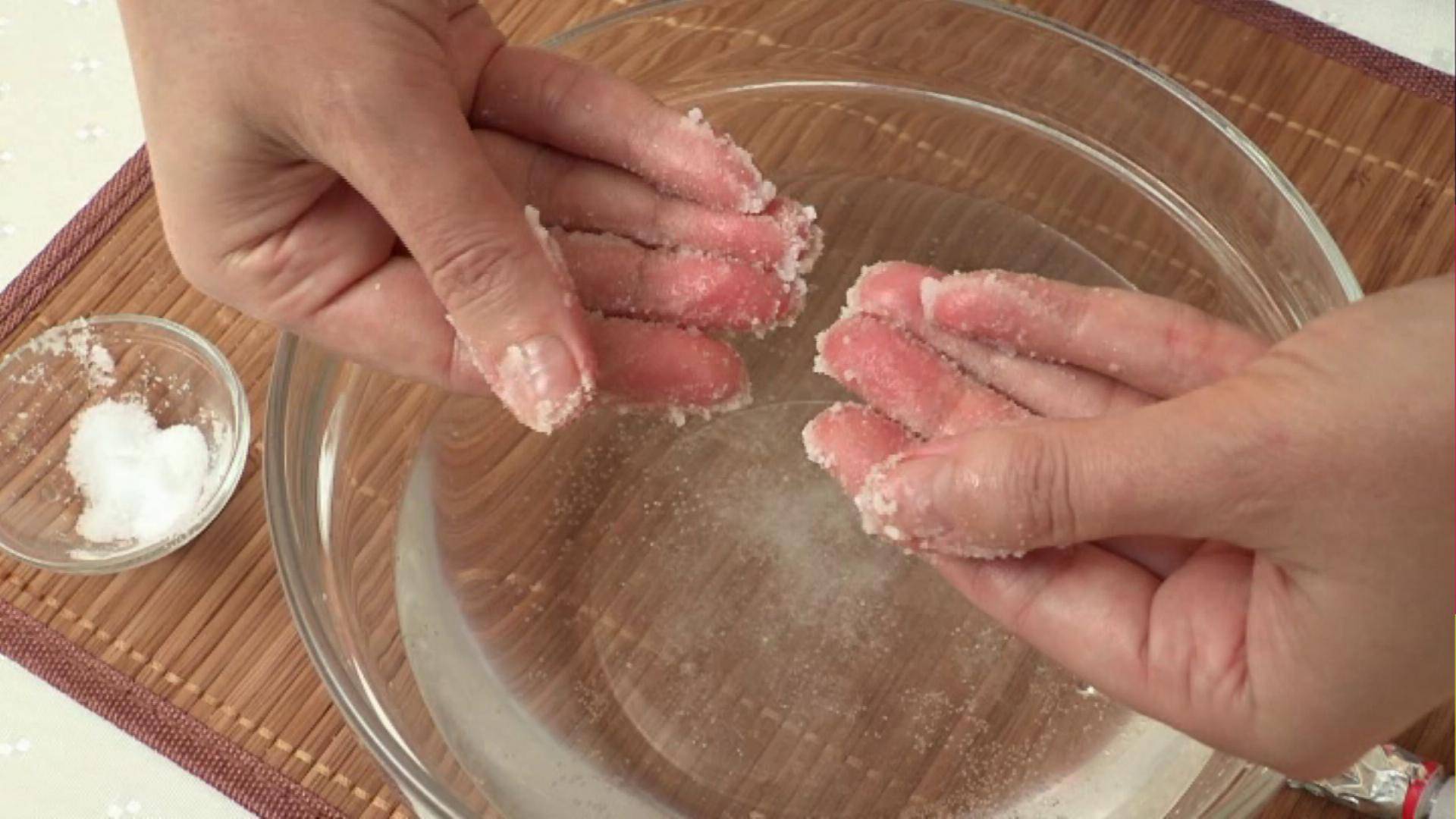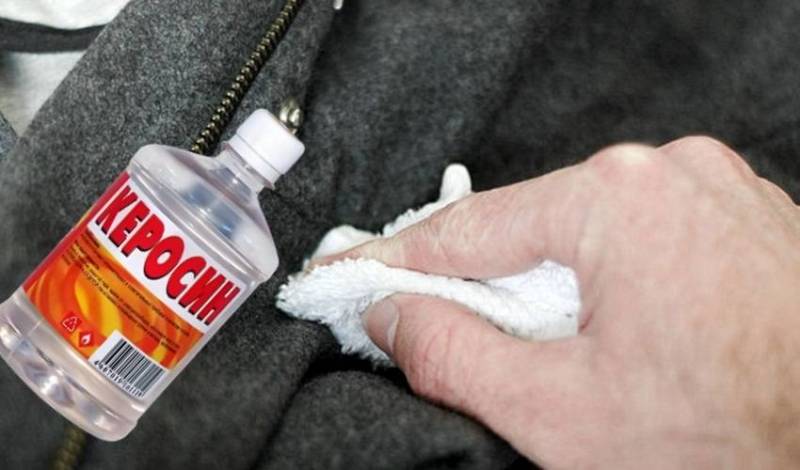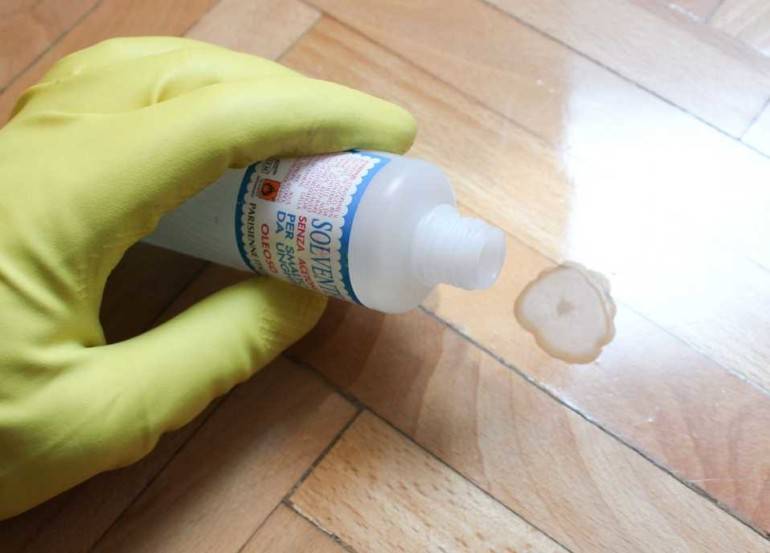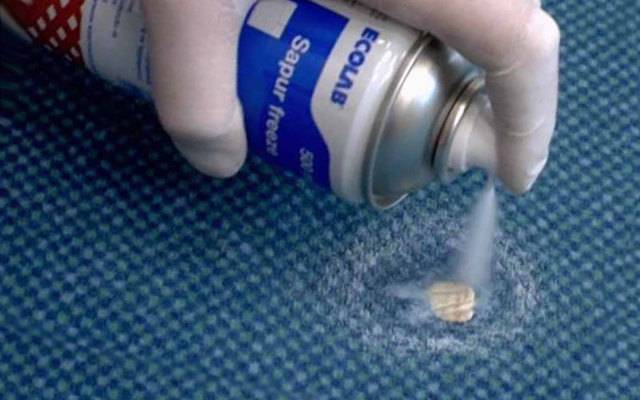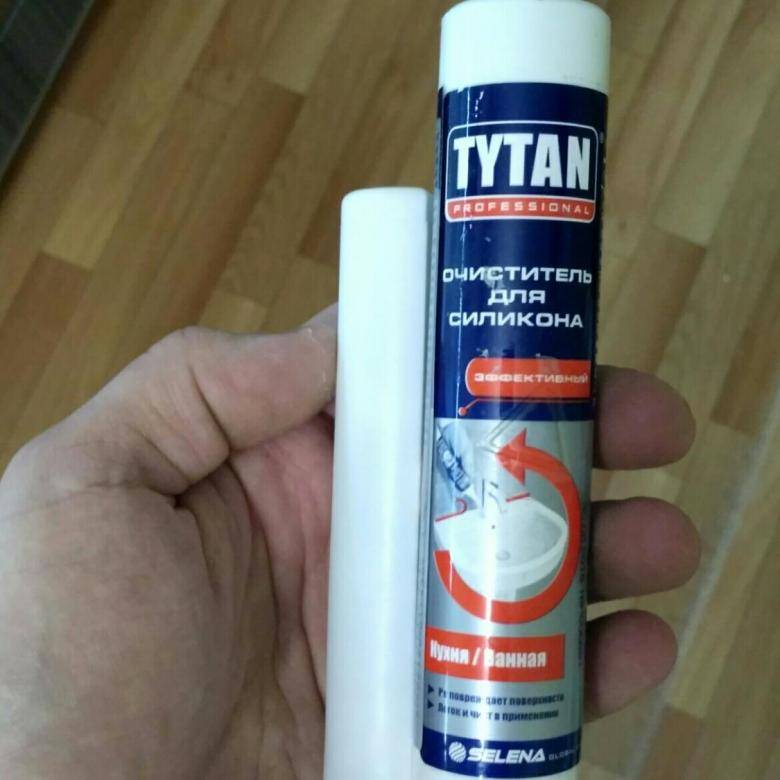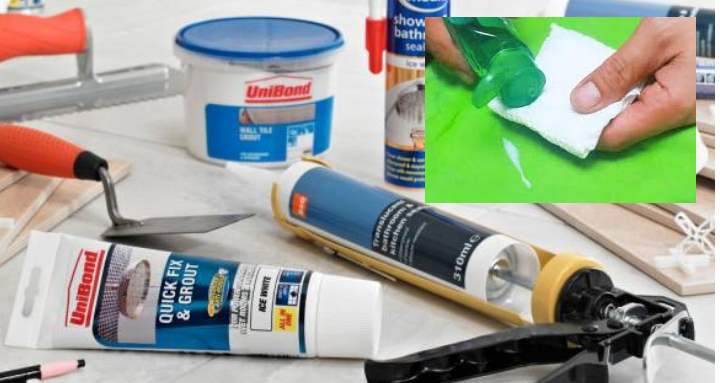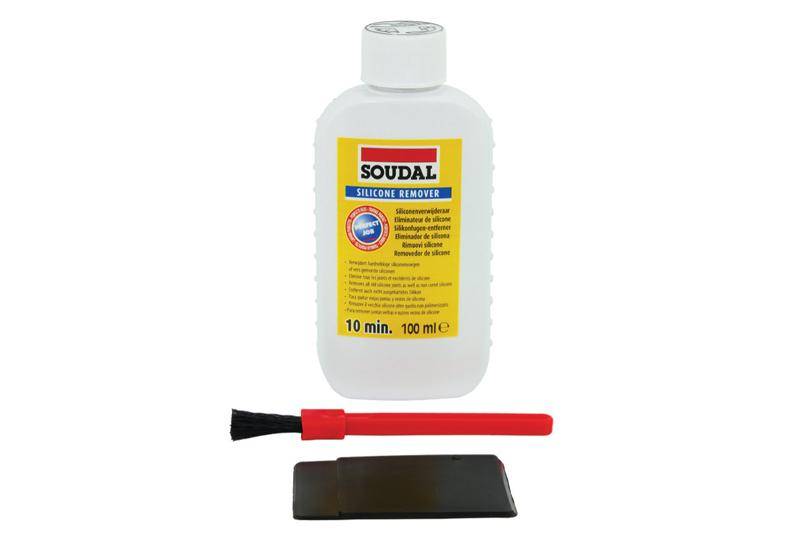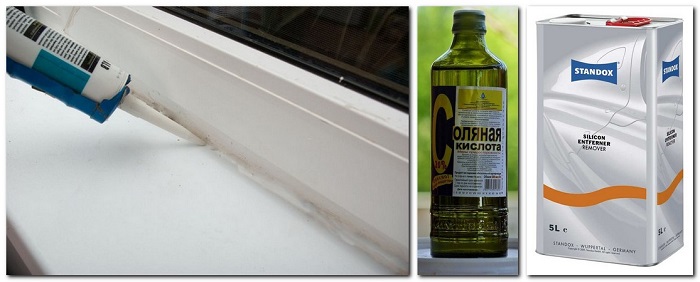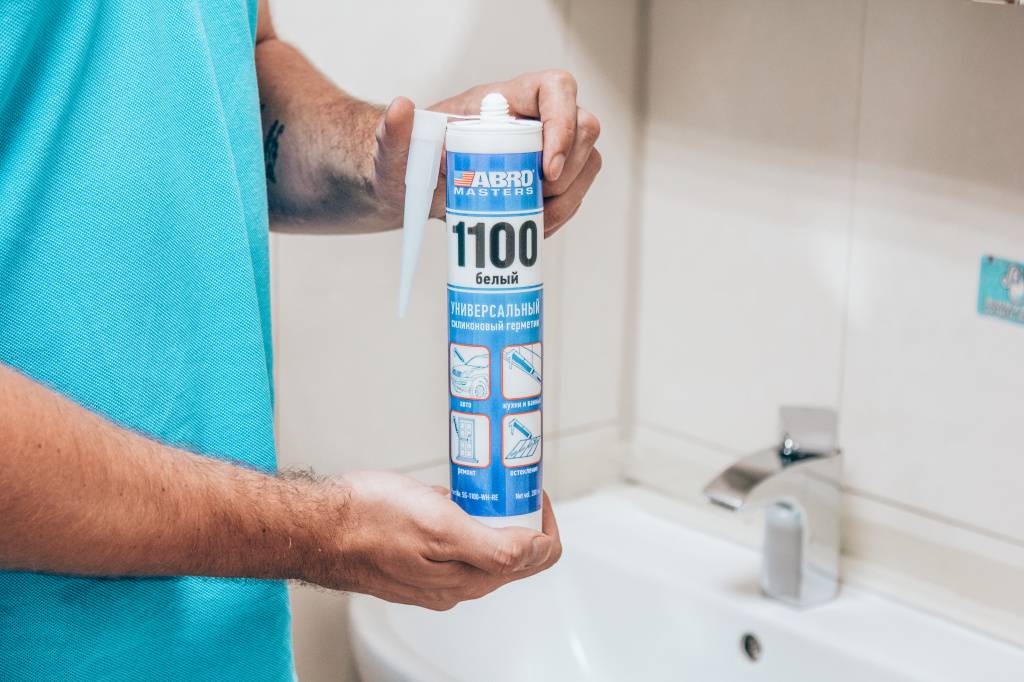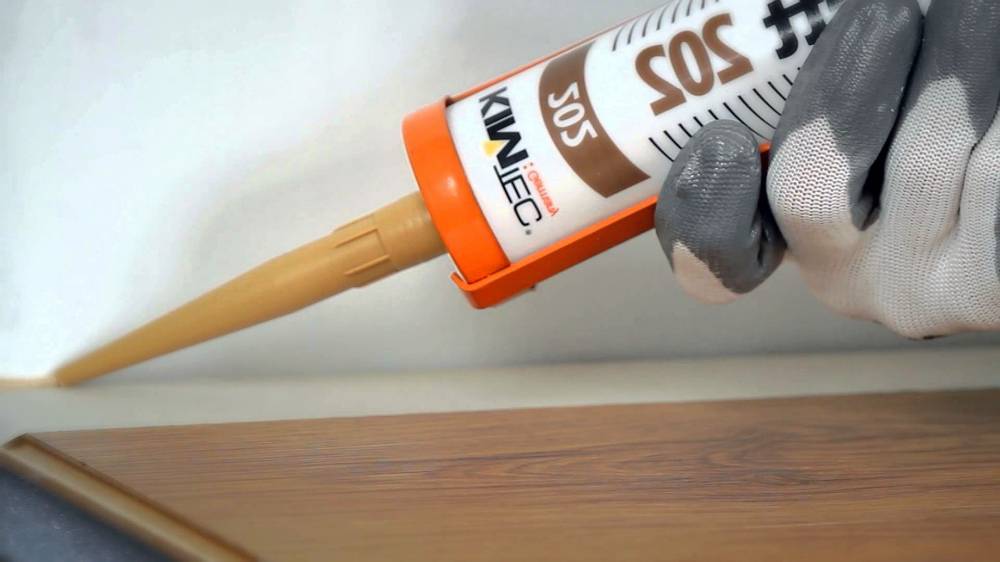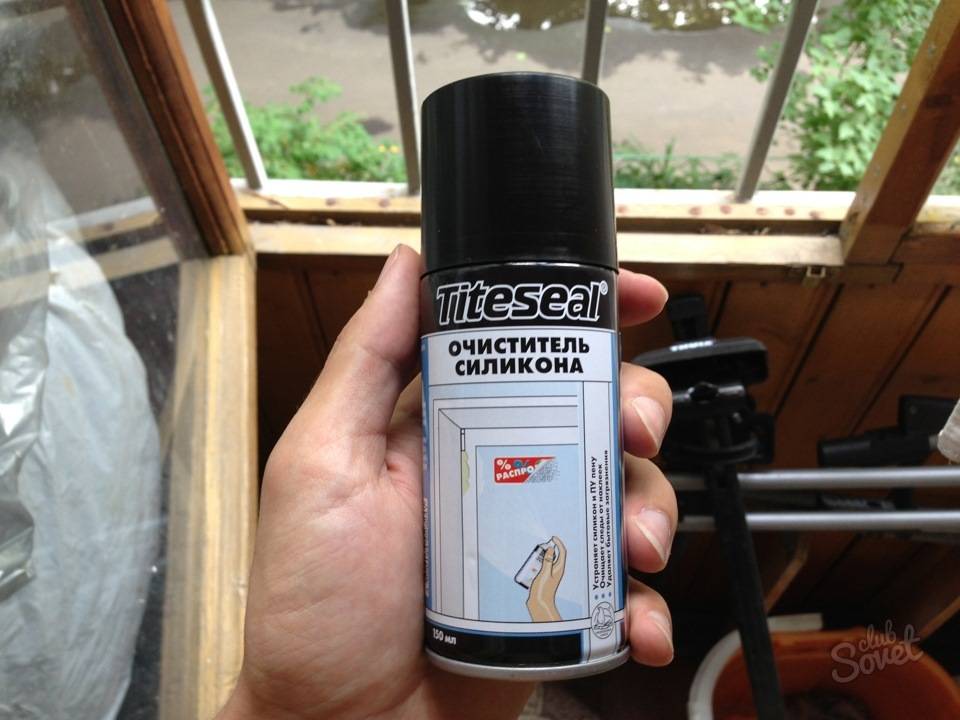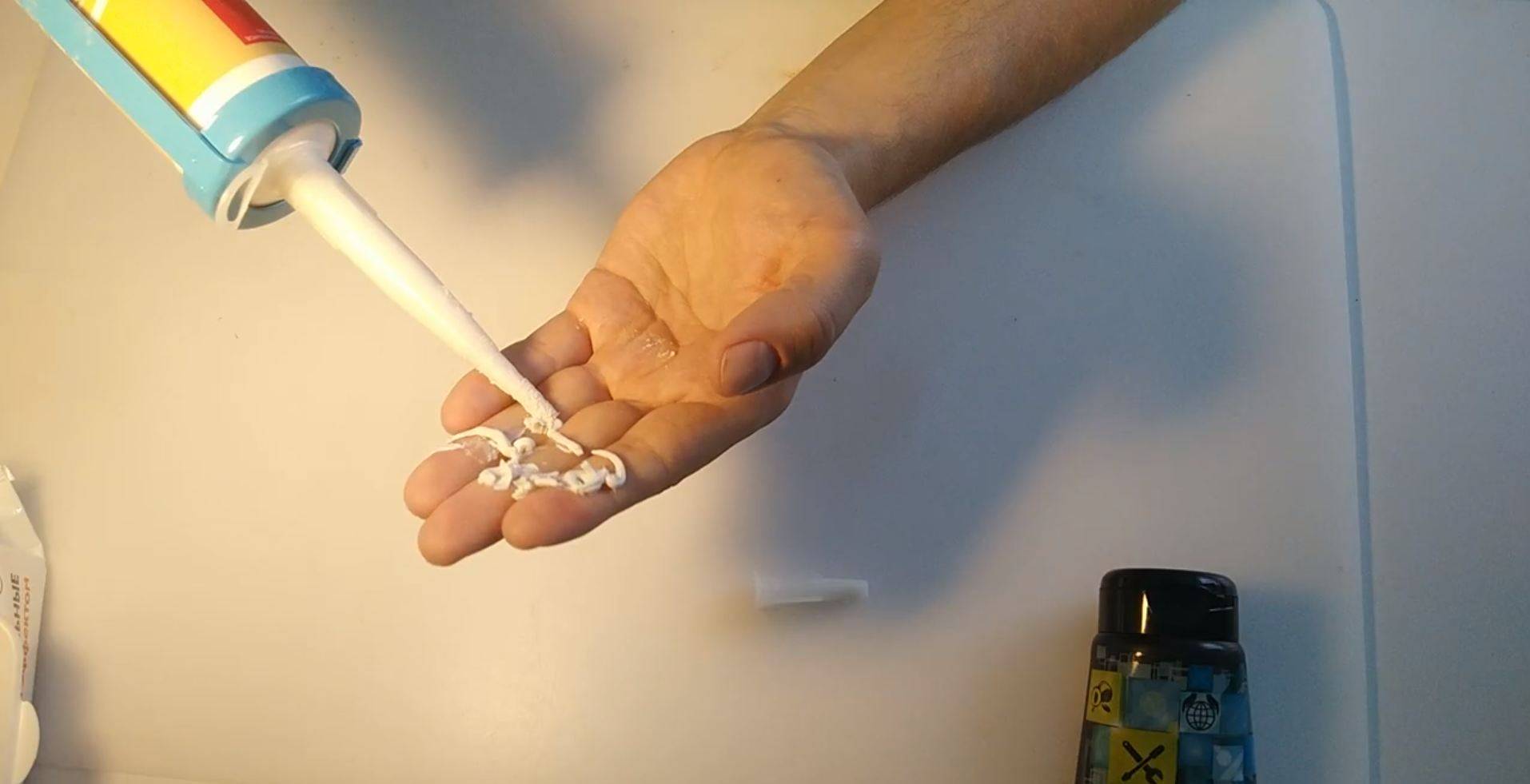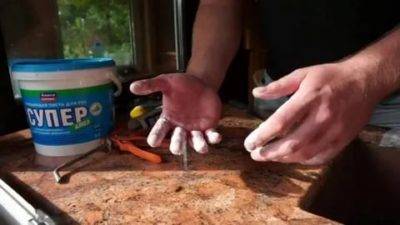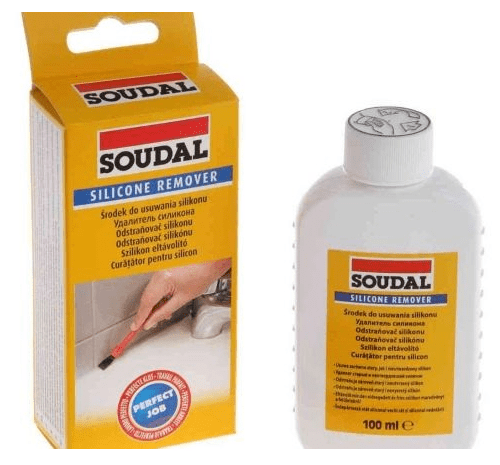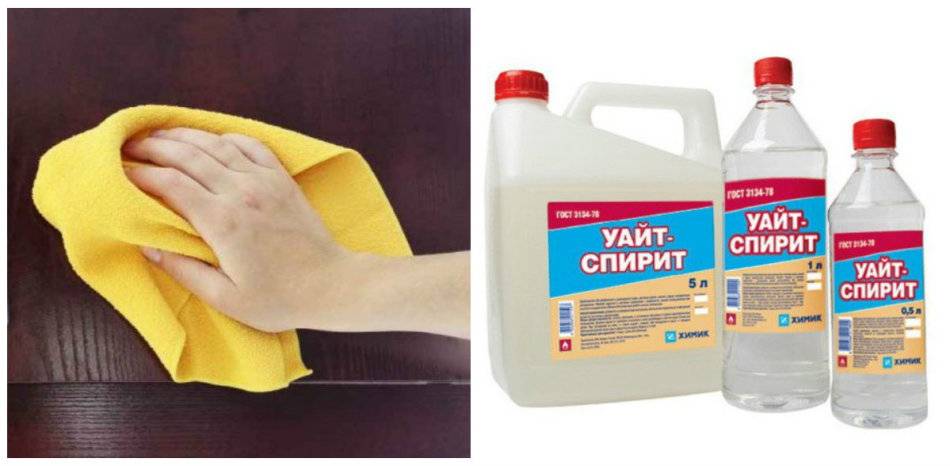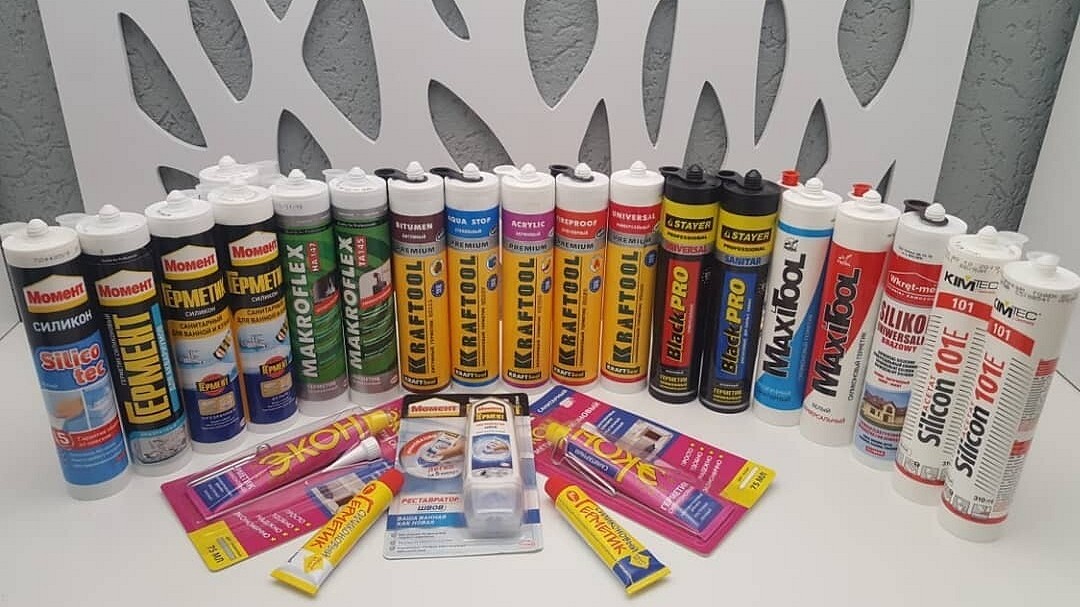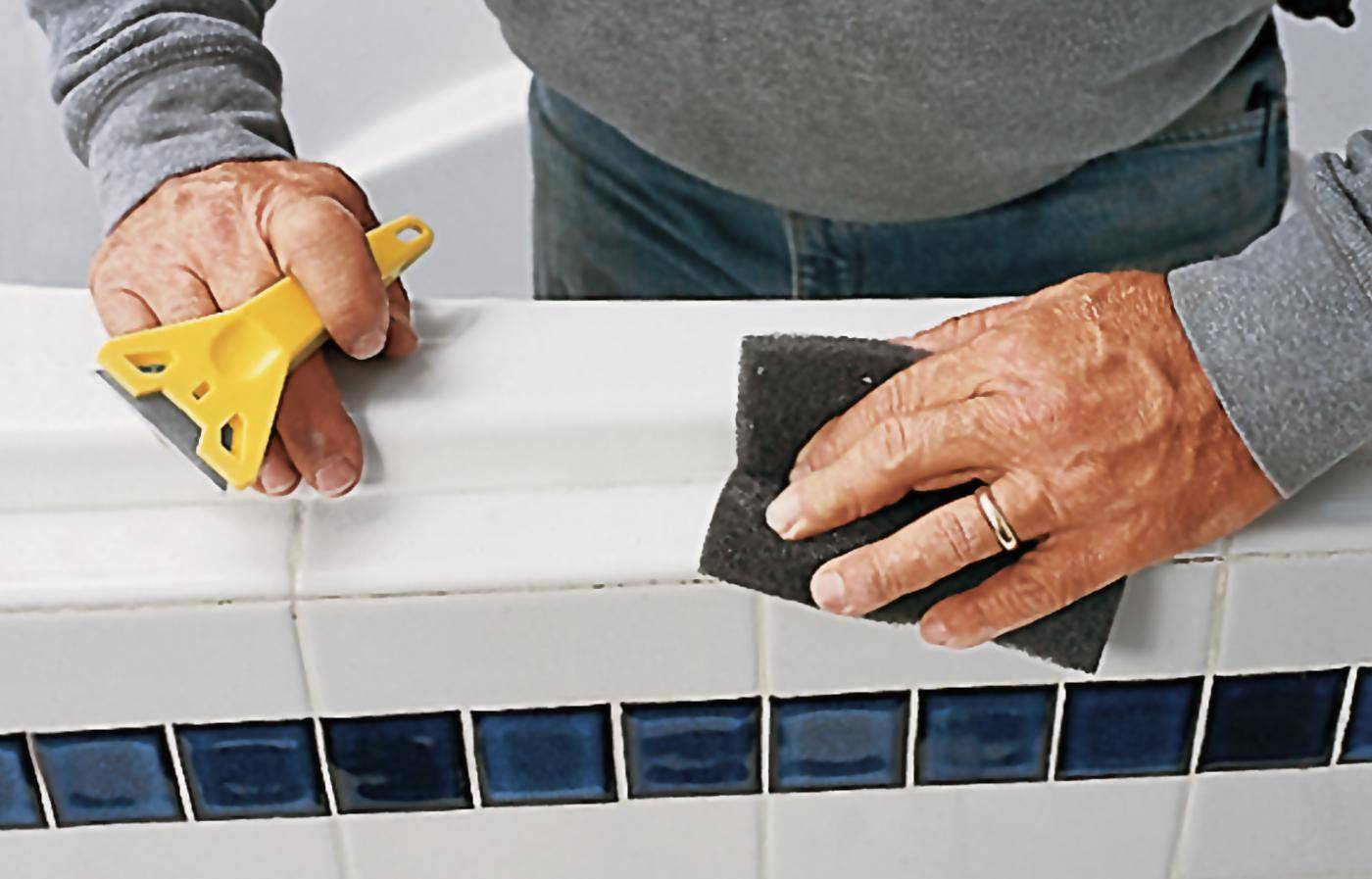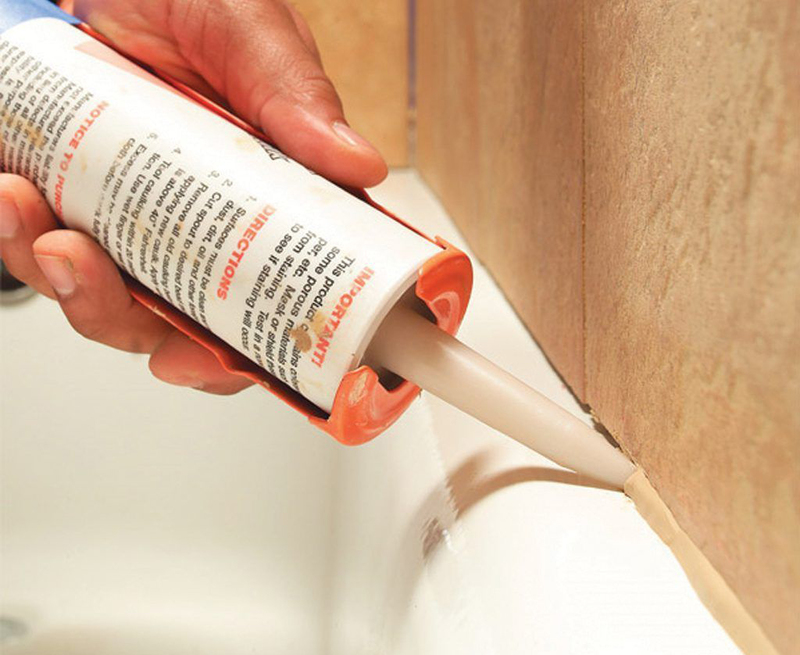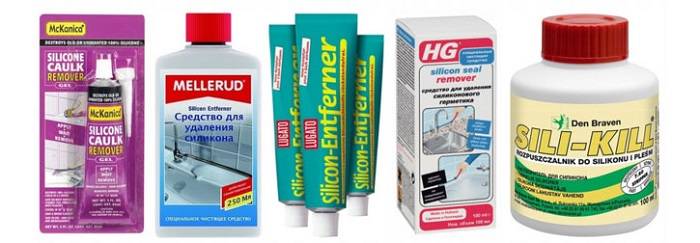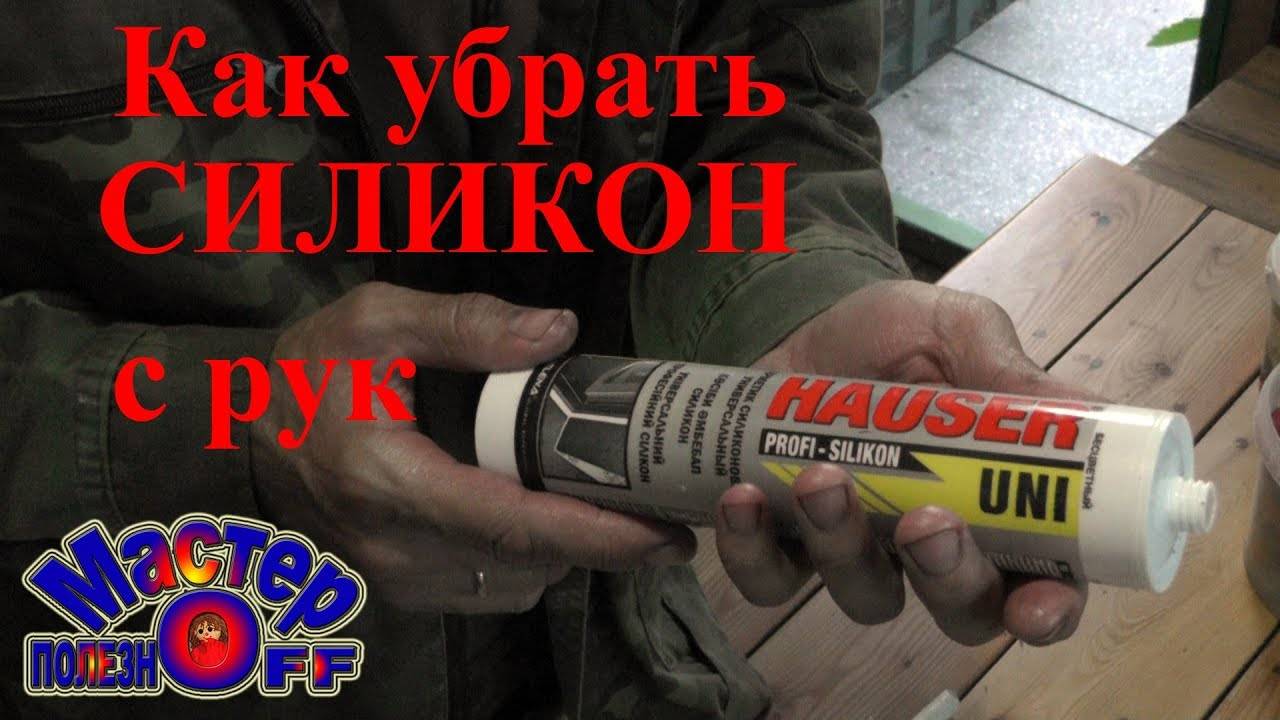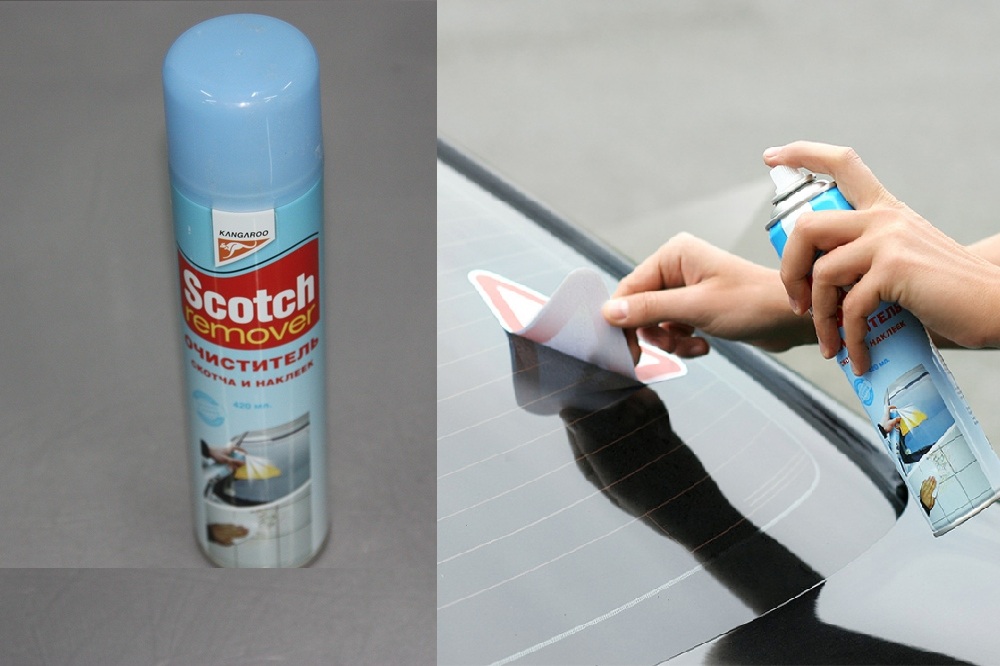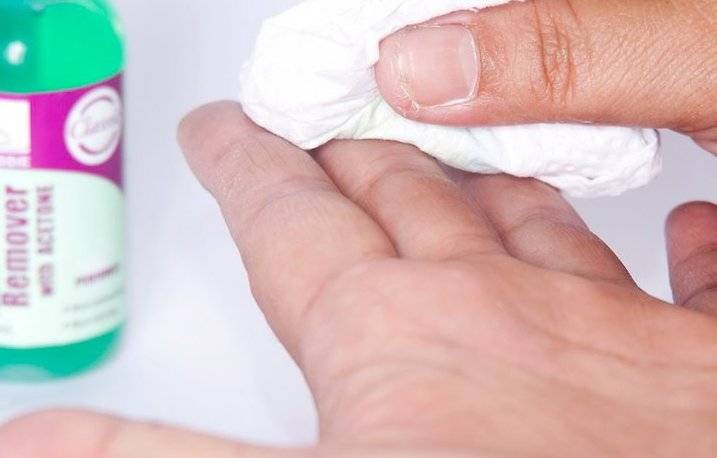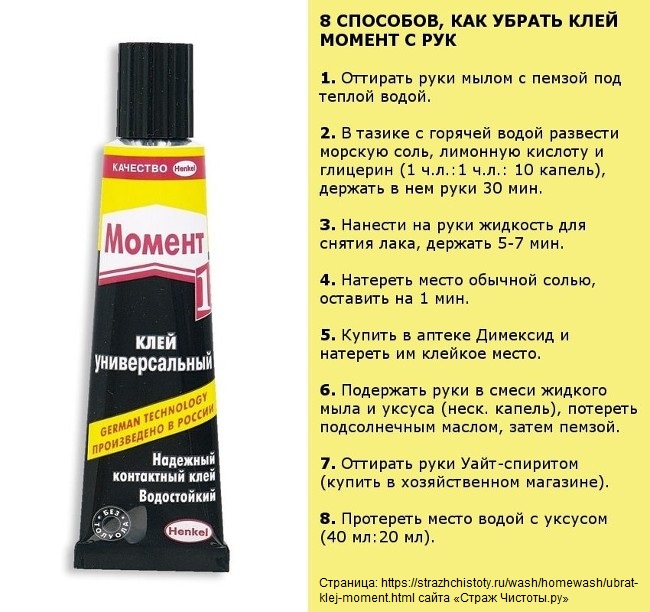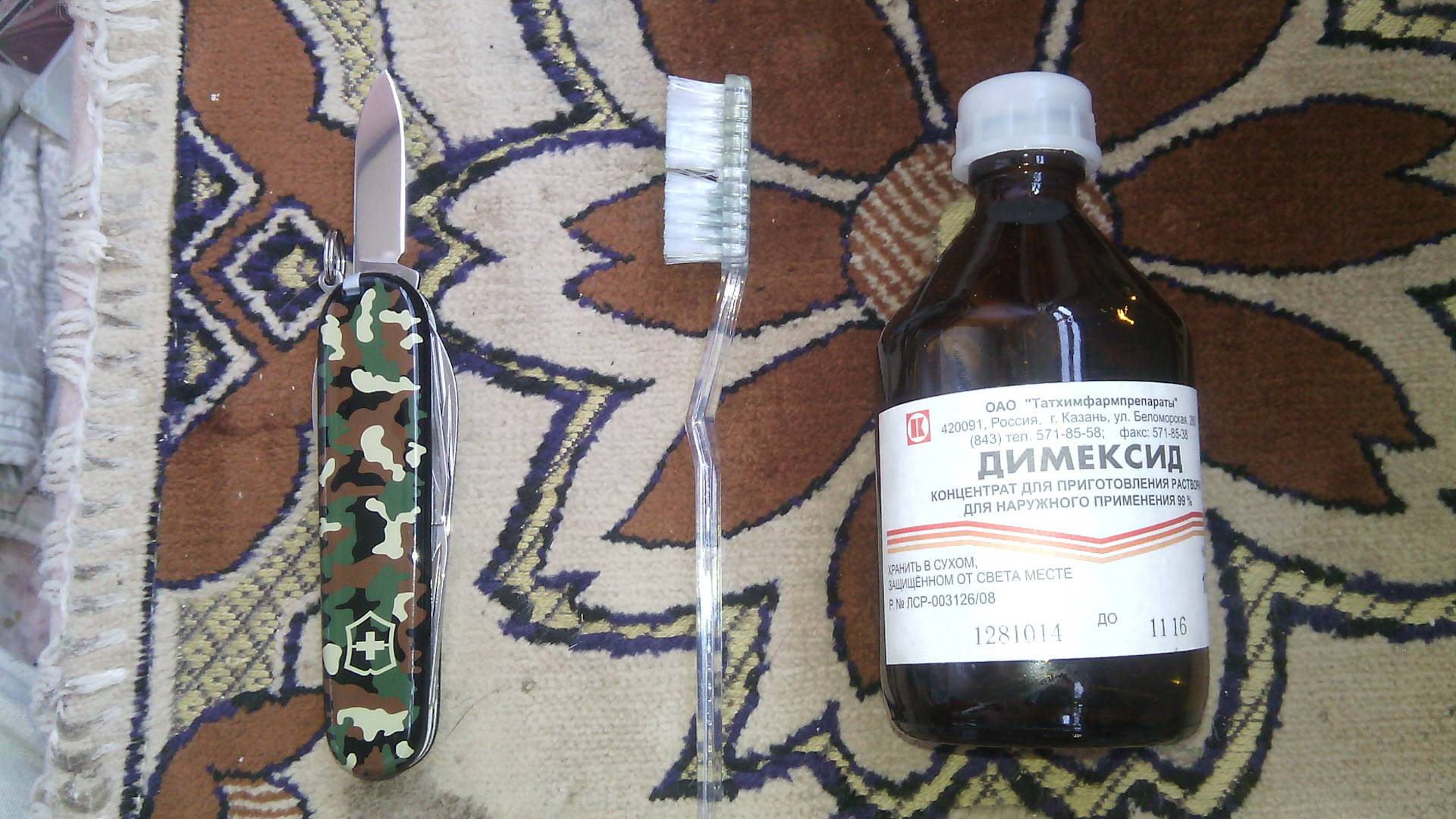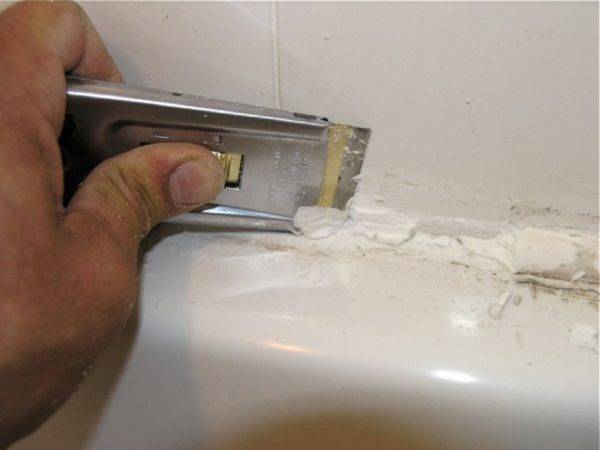An overview of popular removal methods from various surfaces
The sealant, getting on the surface, quickly hardens, it is difficult to remove it using conventional means.

Mechanical
pry the material with a knife or other sharp object, gently pull;
wipe off the silicone with a metal scraper, a spatula by scraping. The main part of the contamination is removed with a sharp object, then the surface is cleaned with a layer of sandpaper;
the mechanical method is well suited for floor coverings (laminate) .. The methods given are suitable for dark surfaces with increased resistance, otherwise the stain can be removed together with paint and acrylic
These methods are suitable for dark surfaces with increased resistance, otherwise you can remove the stain along with paint and acrylic.
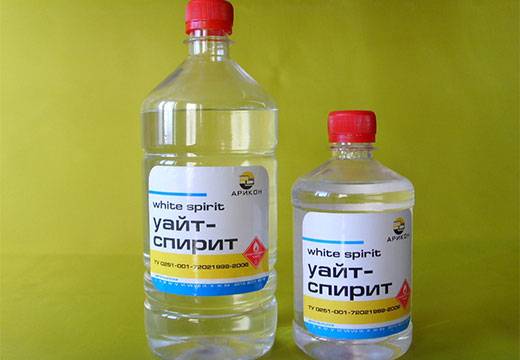
Chemical
When using chemicals on a thick layer of sealant, pre-treat the joints with a rag and remover.
The chemical substance is selected depending on its composition. There are one- and two-component silicones. Acidic is removed with concentrated vinegar or solvent, alcohol is removed with ethyl alcohol, neutral is dissolved with white spirit.
There is another classification of silicones.
- plumbing - used to seal sanitary facilities: acrylic bathtub, shower stall;
- adhesive sealant - used in the manufacture of glass products and glass ceramics: aquariums, stained-glass windows;
- silicones with antifungal additives - used in aquariums, swimming pools.
| Chemical name | Peculiarities |
| White Spirit | Consists of aliphatic and aromatic hydrocarbons. Apply on unpainted surfaces, otherwise the sealant will be removed along with the paint. |
| Penta-840 | A universal solvent for all storage conditions and ambient temperatures. Apply the substance to the required surface, wait for complete softening, rinse with plenty of water. |
| Antisil | Silicone degreaser. |
| Dow Corning OS-2 | Means for removing substances from pvc and acrylic surfaces. |
| Silicon-Entferner | Removes from enamel, metal, plastic surfaces. |
| Lugato Silber Shutz Silicon | In addition to removing it, it prevents the appearance of mold and mildew. |
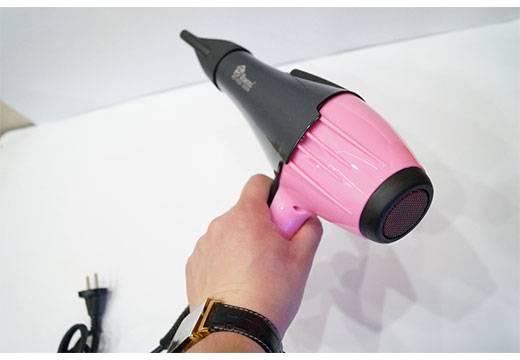
Household methods
fresh stains are removed with a cloth soaked in soapy water. You can clean the brush by soaking it in warm detergent;
the removal method depends on its composition. Neutral seals are made on the basis of alcohol, alkaline - based on alkali, acidic - using acetic acid. To remove, soak the sealant in the material it is based on;
consider the type of surface. It is forbidden to treat wooden kitchen surfaces (countertops) with acetone, white spirit, metal ones - with vinegar (to prevent corrosion);
to get rid of silicone on ceramics, first treat with a solvent, and after half an hour rub the stain;
the easiest way is to wipe old stains off the plastic. It is enough to soak the surface, after half an hour treat it with a solvent, then with a degreasing solution
Use acetone with caution for plastic, there is a possibility of its softening;
removed from metal mechanically (use a knife or scissors);
it is easy to wipe off traces of silicone sealant from glass if you preheat it;
if the sealant needs to be removed from the tile in the bathroom, pick it up with a sharp object and evenly, without sudden movements, remove the substance around the entire perimeter of the tile. If you are afraid of scratching the tiles with a sharp object, use a wooden scraper
Degrease the surface first before applying new sealant;
Wrap the salt in cheesecloth and process any type of silicone;
heat the necessary element with a hairdryer, the silicone will fall off on its own from the high temperature.
Removing silicone sealant from hands
Below are a few options to help you flush the silicone off your body. You can choose one of them or use several at once. To avoid allergic skin reactions, remove this builder from your hands as soon as possible.
Option 1
We will need tools that can be found in any home - soap and a bag. The instruction is as follows:
- We find a plastic bag.
- Silicone sticks to polyethylene, so wipe the silicone stained areas on your hands with this bag.
- Then wash your hands thoroughly with soap and water in running water.
- This procedure must be done several times until all traces of silicone have completely disappeared.
Option 2
This method will be very effective if the contamination is fresh. You need to do the following:
- Heat water in a saucepan. It should be hot, but not boiling water. Make sure you don't burn yourself. Dip your hands in hot water.
- Place your hands in a saucepan for a few minutes.
- Take the soap and lather your hands.
- Rub the soapy areas with a pumice stone.
- Wash your hands with warm water.
Do not forget about your belongings, because they may also have suffered from silicone sealant. Only effective methods will help to remove silicone from clothes.
Option 3
Solvents such as gasoline or acetone are excellent hand rubbing agents. Select one of them and do the following:
- Apply your chosen product to a cotton pad;
- Wipe all dirty areas with this disc.
- Take a bar of soap, preferably laundry soap.
- Rinse your hands in running water for a few minutes.
Option 4
A solution of vinegar is one of the most effective remedies for removing silicone. Vinegar will even get rid of cured silicone sealant. In order to cope with the task, you need to do the following:
- Take equal parts vinegar and water.
- Treat your hands with the resulting solution, rubbing them well.
- After the mortar has been removed, wash your hands with soap and water.
Chemical methods
The effectiveness of any solvent depends on the composition of the sealant to which it is applied. If we are talking about ordinary construction silicone, then in the overwhelming majority of cases it has an acidic base, as evidenced by the characteristic smell of vinegar in the uncured product. Since this type of sealant is now used everywhere, then most likely it is necessary to prepare to remove it, and for this you will need concentrated vinegar, preferably 70%.
In addition to the acid base, there is a neutral one, which includes alcohol, amide and oxide agents. For cleaning alcohol, 96% alcohol, both drinking and technical, is suitable. We remove the rest with refined gasoline, solvent, White Spirit, acetone and other solvents.

After complete polymerization, some types of putty can only be cleaned mechanically. These include primarily all polyurethane sealants. The absence of volatile substances in their composition makes attempts at softening with any solvents unsuccessful. All that can be done is to slowly pick out the dirt with a thin, sharp object. If the polymerization is not completely completed, it can be washed off with 647 solvent or acetone, which is also not very easy. There is also no way to remove it from your hands after complete drying, you just have to wait until it gradually disappears during the natural renewal of the skin. To avoid such problems, it is enough to lubricate your hands with liquid silicone before work, during which the sealant may come into contact with the skin.
When using aggressive cleaning agents, remember that some of the materials to be cleaned may suffer from them.For example, there is no need to wipe silicone off lacquered wooden doors with acetone or 647 solvent. These substances, together with the sealant, can raise the varnish layer.

In any case, one should not expect exhaustive results from chemistry, especially in cases of significant accumulations of sealant. The solvent cannot completely remove the hardened material, it only softens it, which makes subsequent removal easy and safe for the surface to be cleaned.
Folk remedies
Although this material is very viscous, there are various ways you can wash it off. The following describes the most famous of them.
Application of soap and cellophane bag
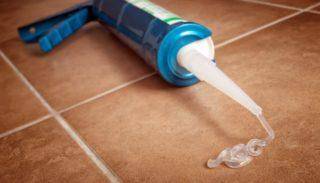 Sealant
Sealant
The simple answer to the question of how to wash off the silicone sealant from your hands is ordinary soap. Although this method is effective, it requires a certain amount of time. In this case, you need to do the following:
- You need to pick up the package and rub it well between your hands. You need to do this until it starts to adhere to the sealant.
- After a significant part adheres to the cellophane, hands must be thoroughly washed with soap.
- If dirt remains on the hands, the procedure must be repeated until the skin becomes clean.
This method takes time, however, it ultimately leads to the fact that the contamination is completely washed away.
Pumice
Before the procedure, a sufficient amount of water should be warmed up so that it feels hot but cannot burn. It is required to lower your hands into it and hold them for several minutes. As a result, the sealant will begin to soften. Now the remains will need to be removed with a pumice stone. This is another option for hand washing silicone.
Once all of the sealant has been removed, they will need to be washed again with soap and water.
Solvent
For cleaning, you can use acetone or gasoline. If they are not in the house, you can take a nail polish remover, it is desirable that it be colorless. A paint thinner is also suitable.
Here's how and with what you can wash your hands from silicone sealant:
- The solvent is applied to a cloth. You can also use a cotton pad for this purpose.
- Wipe off dirt with gentle movements. You need to act carefully so as not to damage the skin.
- After the sealant has been removed from the skin, wash them in warm water and soap.
Important! After the cleaning procedure, it is important to completely rinse off any traces of solvent from the skin.
Vinegar
This liquid is an effective cleaning agent. Vinegar can work even if the material has hardened.
Before you start rinsing off the silicone, you need to dilute the vinegar with water in equal parts. To wash the skin, just wash your hands with the prepared composition. After finishing cleaning, you need to wash off the vinegar from the skin and wash it with warm water and soap.
Sunflower oil
 Silicone wipes
Silicone wipes
It should be borne in mind that it is not suitable in all cases. However, if silicone was used, then with its help, cleaning at home will be done efficiently.
To carry out the procedure, you need to pour sunflower oil into a saucepan and put on a low heat. When it warms up a little, it is removed from the heat.
For cleaning, you need no more than 100 grams of oil. Heating must be low, otherwise there is a risk of scalding. Oil, if applied alone, is not cleanable. It becomes effective if it is used together with washing powder.
You can wash your hands with this composition or just wipe off the skin in places of contamination. The latter method is more preferable due to the fact that washing powders are usually caustic and, if used incorrectly, can damage the skin.
After cleaning is completed, hands are washed in running water.
General recommendations
If you cleanse the skin with harsh chemicals, wash your hands thoroughly after the end of the procedure.Then it is recommended to treat the skin with a moisturizer.
It is important to use personal protective equipment when working with sealant. This requires gloves, goggles, an apron and a respirator to protect the respiratory system.
The sooner you start scrubbing your hands, the more effective this procedure is.
How to clean sealant from different surfaces
Silicone sealant has earned the fame of the most "harmful" among home craftsmen, since it can penetrate even the smallest cracks, from which it is almost impossible to remove it after hardening. Therefore, if the sealant gets on non-working surfaces, you should immediately begin to neutralize it, because with every minute the costs and time to scrape off the affected area increase exponentially. At the same time, some materials, in principle, do not allow you to get rid of silicone.
Now on the market you can find all sorts of tools that exactly help soften and wash the sealant.
From glass
Since the physical structure of the glass interferes with deep adhesion, to remove the sealant from its surface, it is enough to cut the base layer with a knife with a thin blade, and then remove the residual film with white spirit or a regular stationery eraser. Particularly stubborn layers can be removed using strong heat or in a more radical way, for example, with a drill with a felt nozzle.
Before using mechanical treatment to remove the remaining silicone sealant, every precaution should be taken to avoid scratching the glass.
From plastic
Silicone is much easier to remove from this surface, since the plastic is also slightly susceptible to adhesion (if no special treatment has been carried out). However, to remove it, you still have to use a solvent that is applied to the stain area and cured for an hour. After that, the bulk of the silicone is removed with a spatula. The residual film can be easily washed off with any degreasing agent.
When trying to scrub off the silicone, it is important not to overdo it so as not to scratch the surface.
From tiles
On the one hand, the tile surface allows the use of any chemistry that can soften sealants, and on the other hand, it is still impossible to do without mechanical treatment. This means that there is a risk of damage to the glaze coating of the tiles. Therefore, in order not to spoil the enamel, it is necessary (if possible) to carry out experimental removal in the least noticeable place - this procedure usually involves the use of a solvent, followed by treatment with an abrasive or a spatula.
All work to remove contamination must be carried out carefully so as not to damage the surface to be treated.
From clothes
The most difficult case, because there is nothing worse than a cloth soaked in a sealing compound. A more or less acceptable result can be obtained only by removing fresh silicone, since it is almost impossible to clean a sealant that has already dried out. However, you can try the following:
- Gasoline cleans up a film of recently spilled sealant.
- Hardened silicone is worth trying to freeze. For example, in the freezer. Then try to knock it off.
- Heat treatment sometimes helps. It is necessary to iron the contaminated area through a paper towel - some of the sealant will be absorbed into the paper, and the rest can be washed off with a solvent.
Removing silicone sealant from clothing is not that difficult.
From hands
Despite the fact that all work is recommended to be carried out with protective gloves, silicone still occasionally gets on the skin. If this happens, wipe the affected area well with a clean cloth dipped in vinegar and water (1: 1) and then remove the remaining sealant with a solvent.
At the end, you should wash your hands well with soap and grease with moisturizer.
Clearing your hands of polyurethane foam is not an easy task
Polyurethane foam does not cause such obvious allergic reactions, but it is no less problematic to remove it from the skin, especially if it has dried out. If the foam hits the unprotected areas of the skin, you need to act as quickly as possible, otherwise the foam will harden and you will have to wait for the n-th number of days until it falls off along with the dead epithelial cells. If foam gets in, it is necessary to gently and quickly wipe off this material with a soft rag, never smear it on the skin.
Professional installers for these purposes use special napkins
, which help to clean the hands of polyurethane foam. If you have not previously taken care of buying this product, you can try to pour warm water into a container and add there table salt
... After that, lower your hands into this basin and wait a little to wash your hands from the polyurethane foam, among other things, you can use a stone pumice stone or the hard side of a washcloth.
Also, the usual one helps to get rid of foam. soapy water
... Dip your hands in a container of soapy water and wash them thoroughly from time to time, wiping off the lather with a washcloth or sponge. These methods do not give instant results; to obtain the desired effect, you need to use them within 5-10 minutes.
If none of the above methods managed to wash the foam off your hands, you can try using vegetable oil
... To do this, the oil is heated and applied to the skin of the hands, after this has been done, an ordinary washing powder is taken and a small amount is poured onto the hands. After that, you need to carefully wipe off the foam with this powder. It is necessary to carry out the procedure until the dirt is completely removed from the skin, and only after that the hands are washed with warm water.
So, the removal of insulating and installation materials from open skin areas is a rather painful and time-consuming process. Therefore, experts recommend that as few questions arise about how to wash off the sealant from hands and others like it, use respirators and gloves while working.
Before puzzling over the question of how to remove silicone sealant, you need to understand what this material is. It is an adhesive sealed material that is used in repair and construction. It is necessary when installing plumbing (sinks, showers, bathtubs), in the manufacture of aquariums and other glass products, for sealing cracks. Due to its strength and tackiness, this material is very difficult to clean from clothing, skin or any surface without any consequences.
How to remove from hands?
Working with silicone sealant requires compliance with personal safety measures, so it should be applied only in protection - gloves are put on the hands, and the body is put on clothes made of dense fabric. But, despite this, there are often cases when the mixture still remains on the skin, and it is difficult to wash it off in the end. In addition to its untidy appearance, building material can cause redness, irritation and an allergic reaction of the skin, because of this, it must be washed off as soon as possible.
Soap and cellophane
This method requires you to take an ordinary clean plastic bag or a piece of oilcloth and rub the contaminated area with it. Most of the glue will remain on the polyethylene, and the rest will be easier to wash off with soap under the tap and warm water.
Pumice and water
It is advisable to warm water for this purpose. The method works well on fresh sealant, and if you put your hands in a vessel with warm water, the glue will quickly soften. Then all that remains is to rub the dirty area with a pumice stone, removing the stratum corneum.
Solvents
They will do their job well here, too. Nail polish remover, table vinegar and gasoline applied to a cotton swab will clean the dirt thoroughly. The main thing is to wash your hands well with soap after that, then apply a skin care cream.
Oil and powder
Hands should be moistened in heated vegetable oil, and then rubbed with a small amount of washing powder. The liquid will soften the skin, expanding its pores, where small particles of glue are trapped, and the powder absorbs dirt, and your hands will be clean again. The main thing is to remember to wash your skin thoroughly under running water and soap.
How to dissolve silicone sealant: the basics of work
If it is necessary to remove the silicone, we recommend that you proceed immediately. The thicker the layer, the faster it dries. Thin adheres to the surface almost immediately. If you initially take simple measures to protect surfaces, then in the future you will not have to think and guess how to remove the silicone sealant:
before starting work, cover the places where there should be no composition with masking tape or tape. The protective material will not harm surfaces and will not leak the sealant. When construction or finishing work is completed, the tape can be easily and quickly removed;

Masking tape will help protect the surface from silicone sealant. It is easy to remove after completion of the renovation work.
- if 20 minutes have not passed since the application of a thick layer of silicone, the composition did not have time to bond and harden. Take any sharp knife, spatula, blade (someone advises using an ordinary bank card!) Insert it under the layer and pull it towards you - the composition should move away;
- apply on a surface where there should be no silicone, oil, even sunflower is suitable. The main thing is that the liquid does not get into the area where the sealant is needed. The composition will not adhere to the oily surface;
- cover glasses and mirrors with a cloth to avoid getting solution on them;
- work only in protective gloves (rubber or cotton) so that the mixture does not come into contact with the skin;
- Protect your hair with a hat or kerchief. It will be difficult to wipe off the substance from the head, there is a risk of severely damaging the hair;
- for work, choose a special uniform or old clothes that you do not mind getting dirty, remember that it is almost impossible to wash things made of chiffon from silicate.
How to wash from clothes?
Very often, clothes are exposed to adhesion of silicone glue. Unlike other substances, it cannot be washed off with any stain remover. Immediately after contact, the fabric should be immersed in hot water. The high temperature will soften the glue and make it easier to remove from the fibers. If it is not possible to immediately throw things into the washing machine, and the sealant has already frozen, then you will have to resort to already known solvents. You need to soak clothes in them for half an hour, and then calmly wash the stain.
The solvent can spoil the colored fabric, therefore it is advisable to resort to mechanical cleaning here. To do this, you will have to spread your favorite T-shirt on a flat surface, and carefully, layer by layer, cut off the remnants of the mixture from the fabric to the very base. The solution deeply embedded in the fibers is scraped out with a brush or pumice stone. It would be nice to treat the remains with vinegar concentrate or other universal solvent, as well as gasoline or alcohol. Then, of course, it is better to wash the rest of the softener in hot water.
How to get rid of sealant on clothes
- treat the stain with a solvent and iron through a layer of paper;
- traces of fresh adhesive sealant are removed by soaking the garment in hot water. Since silicone degrades from high temperatures, the chances of removing the stain in this way are great. If the stain is dry, first resort to the help of a solvent;
- for resistant fabrics, a brushing procedure is used;
- if the stain has not yet been absorbed, then lift the soiled cloth by slightly stretching it. Then place in the freezer for 2 hours. Temperature changes are destructive for these substances, they are easily scraped off;
- to clean the stains on the leather material (straps, cases, bracelets) use the home method: mix ammonia with water in equal parts and add soap.
Cleaning other surfaces
Silicone sealant is often used in kitchen countertops. Solvents can be used to remove this material. Silicone often contains petroleum products, so gasoline is suitable for this purpose. Apply the liquid with a soft cloth and leave for 30 minutes. After half an hour, you can scrape off the layer with a scraper, spatula or spatula.
If the layer is stale and old, it is much more difficult to remove it. To do this, you will have to use a knife to cut off the top. Then a solvent is used. At the end, you need to wash off the traces with a detergent capable of dissolving fat.
When working with silicone, it often stays on clothing. Chemicals are not suitable for removal as they can damage the fabric. It is advisable to test the solvent by soaking a piece of cloth with liquid. If it fits, then you need to apply the product to the contaminated area and leave for 20-40 minutes, then gently brush and wash the thing.
If solvents cannot be used to remove sealant from clothing, then you can use two simple methods:
- place soiled clothes in the freezer for 2-3 hours, then remove and remove traces of silicone with a scraper;
- treat the stain with hydrogen peroxide, applying it until it disappears completely.
After any work on cleaning clothes, they must be washed so that there are no traces of fat left.
The silicone also stays on the hands when handled without gloves. It is easier to remove fresh sealant with a regular bag. It will easily stick to plastic and can be torn off along with the bag.
Table salt is often used for these purposes. You need to take 2-3 tbsp. tablespoons of salt and dissolve in 250 ml of water. Hands should be immersed in the liquid and held there for 15 minutes, and then with a brush, wipe off the remnants of the sealant from the skin.
Warmed vegetable oil is also suitable for removal. It is applied to the skin and waited for a reaction with silicone. After that, you can simply wash your hands using soap, gel or scrub. You need to be careful with the heated oil so as not to burn yourself.
Simple measures can help you avoid problems with removing sealant stains. Gloves must be worn while working. Fresh drops must be removed immediately, because they can be easily removed. When sealing the seams, it is good to use masking tape, then they will turn out smooth and without traces of silicone. Builders recommend not to throw away the cap from the spray can, but to keep it, so that later, if necessary, choose the right solvent.


